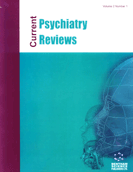Abstract
Background and Objective: Transcranial direct current stimulation (tDCS) has shown therapeutic efficacy in different psychiatric disorders including depression, attention deficit hyperactivity disorder (ADHD), cognitive functions in healthy subjects have made this technique an interesting research option for developing non-medication techniques for a variety of psychiatric disorders. This paper aimed to comprehensively review the therapeutic applications of tDCS in psychiatric disorders.
Method: The databases of PubMed (1985-2018), EMBASE (1985-2018), Web of Sciences (1985- 2018), PsycINFO (1980-2018) and Google Scholar (1980-2018) were searched using the search terms "transcranial direct current stimulation" OR "tDCS" AND "psychiatric disorders" OR “neuropsychiatric disorders” AND "treatment" AND “efficacy”. The retrieved records were screened for the title and abstract by two authors and the relevant papers were reviewed for further details. The applications of tDCS in the disorders with promising outcomes are discussed.
Results: TDCS has shown therapeutic effects in different neuropsychiatric disorders such as major depression, attention deficit hyperactivity disorder (ADHD), schizophrenia, Alzheimer disease (AD), tinnitus, obsessive compulsive disorder, hallucinations, and substance abuse. The clinical efficacy for major depression, ADHD, schizophrenia, and tinnitus is more promising. This may be partly because more studies have been conducted on these disorders than the other disorders. For depression tDCS shows treatment efficacy comparable with the first generation antidepressive pharmacological drugs. Anodal tDCS over prefrontal cortex (PFC) was the most used protocol for major depression. The anodal tDCS over frontal cortex and right inferior frontal gyrus show promising therapeutic effects in ADHD. For tinnitus the most frequent used protocols are bifrontal and bilateral tDCS applied over dorsolateral PFC and auditory cortex. Anodal tDCS over frontal cortex particularly LDLPFC and temporal cortex showed therapeutic efficacy in AD. For schizophrenia, tDCS has shown effectiveness in reducing the disease’s symptoms ranging from auditory hallucinations which the effects were the most marked to working memory, learning, negative and cognitive symptoms. The frequently used sites of stimulation were PFC and temporal cortex.
Conclusion: The current evidence showed the therapeutic efficacies of tDCS as adjunctive or alternative treatment option for different neuropsychiatric disorders. TDCS due to its safe and cost-effective profile could be developed for symptoms amelioration or at least cognitive enhancement in these disorders. However, further studies with big sample size should be conducted to develop effective protocol for each disorder as well as understanding the mechanisms of action of tDCS in neuropsychiatric disorders.
Keywords: Transcranial direct current stimulation, neuropsychiatric disorders, treatment, depression, schizophrenia, ADHD, Alzheimer disease, tinnitus.
 47
47 4
4


